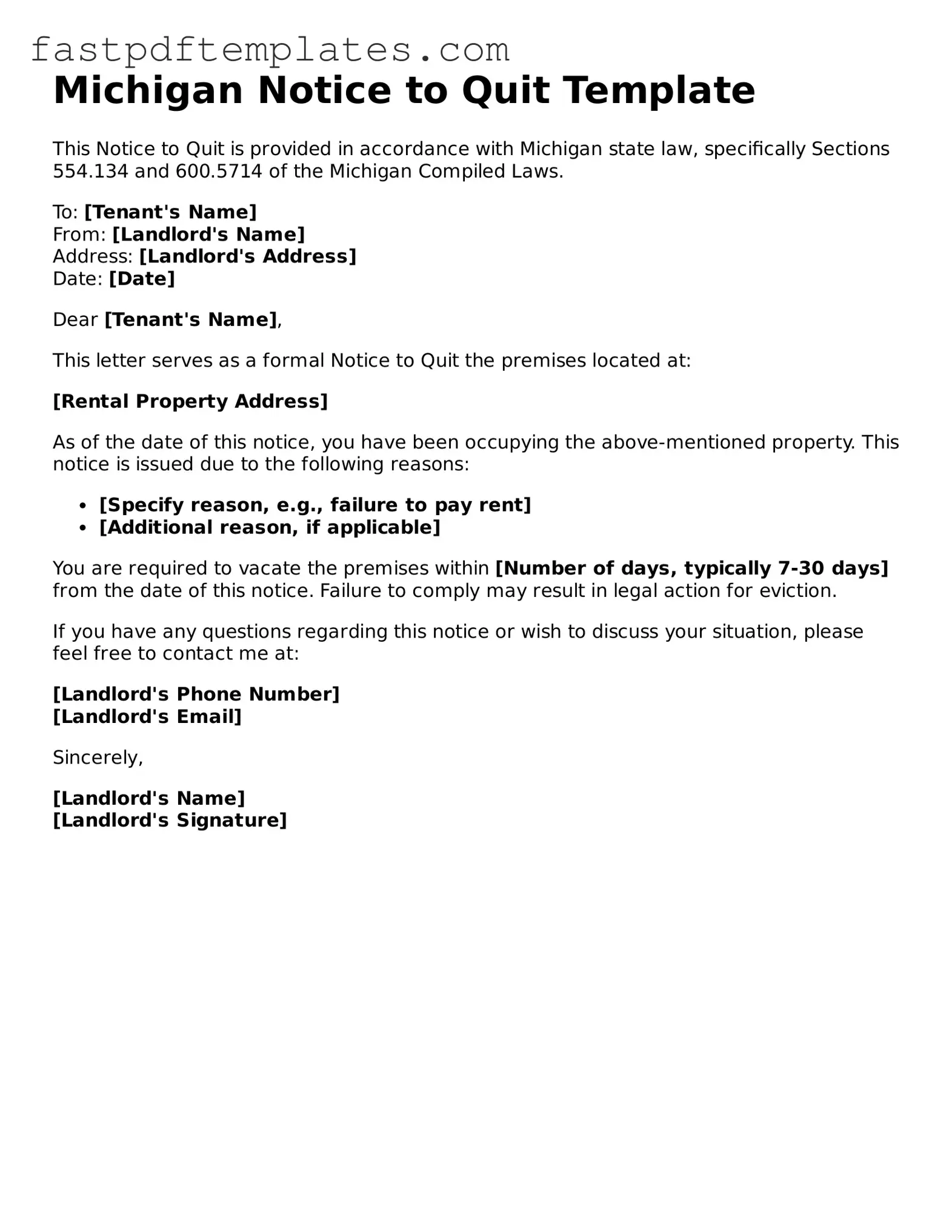Michigan Notice to Quit Template
This Notice to Quit is provided in accordance with Michigan state law, specifically Sections 554.134 and 600.5714 of the Michigan Compiled Laws.
To: [Tenant's Name]
From: [Landlord's Name]
Address: [Landlord's Address]
Date: [Date]
Dear [Tenant's Name],
This letter serves as a formal Notice to Quit the premises located at:
[Rental Property Address]
As of the date of this notice, you have been occupying the above-mentioned property. This notice is issued due to the following reasons:
- [Specify reason, e.g., failure to pay rent]
- [Additional reason, if applicable]
You are required to vacate the premises within [Number of days, typically 7-30 days] from the date of this notice. Failure to comply may result in legal action for eviction.
If you have any questions regarding this notice or wish to discuss your situation, please feel free to contact me at:
[Landlord's Phone Number]
[Landlord's Email]
Sincerely,
[Landlord's Name]
[Landlord's Signature]
